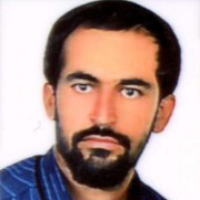Optimization of environmental factors affecting gold microbial bioleaching by indigenous bacteria in Zarshuran mineral ore
Author(s):
Article Type:
Research/Original Article (دارای رتبه معتبر)
Abstract:
Background and Objectives
Zarshuran gold mine as the largest gold mine in Iran is located in Takab, West Azarbayjan. In this study, for the first time, the ability to isolate the gold element was examined by providing optimal conditions for the growth of natural microorganisms in Zarshuran gold ores and investigating the effect of different factors including pH, leaching time and the ratio of the ore volume to leachate.Materials and Methods
The study was designed using the Taguchi method in three levels to evaluate the effect of each of the pH, leaching time and the ratio of the ore volume to leachate. The effect of each factor and the appropriate level for bioleaching refractory gold was investigated using the Qulitek-4 software.Results
The most effective factor was the ratio of the ore volume to leachate which was 17.20% and the least effective factor was the leaching time which was 7.84%. The level 3 was the most appropriate pH level which was assessed as 59.46%. The most appropriate level for the ratio of the ore volume to leachate was level 1, with the amount of 66.14% and a ratio of 1/1. The most appropriate level for the time was level 1, as well, with the amount of 56.78% and duration of 30 days.Conclusion
Considering the three functional environmental factors, much gold can be separated from ore at an industrial scale without spending too much money.Keywords:
Language:
Persian
Published:
Journal of Microbial World, Volume:10 Issue: 3, 2018
Pages:
202 to 209
https://magiran.com/p1801426
مقالات دیگری از این نویسنده (گان)
-
Biological agents associated with brick biodeterioration in Gonbad-e Qābus tower UNESCO World Heritage site
, Mohammad Sohrabi*, Abdolmajid Nortaghani, MohammadHassan Talebian
Journal of Research on Archaeometry, -
A review of biodeterioration in Iranian historical monuments with emphasis on porous architectural materials
, Mohammad Sohrabi*, Mohammad Hassan Talebian, Abdolmajid Nortaghani
Journal of Research on Archaeometry,


